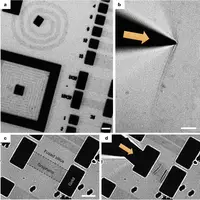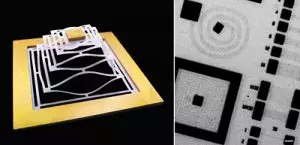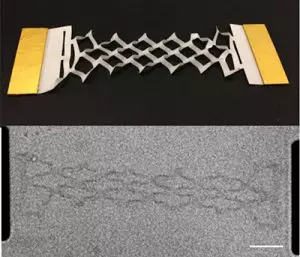- PW 2015 07 29 kirigami
- PW 2015 07 29 kirigami 2
Researchers have for the first time managed to create a transistor that is bendable and stretchable. This is huge news for shapeable devices. Althought it’s far away from reaching the market, we now know it’s possible. And therefore soon enought big companies will want to get their hands on this kind of technology.
The transistors were inspired by the Japanese art of Kirigami, as you can see on the comparisons above.
For centuries, practitioners of origami (‘ori’, fold; ‘kami’, paper) and kirigami (‘kiru’, cut) have fashioned sheets of paper into beautiful and complex three-dimensional structures. Both techniques are scalable, and scientists and engineers are adapting them to different two-dimensional starting materials to create structures from the macro- to the microscale
[ht_quote align=”default”]The mainstay of the electronics industry, silicon, is rigid and brittle, and is therefore not appropriate for making deformable electronics. The ability to deform is particularly useful for electronic devices that interface with biological organisms, for example sensitive prosthetic skin and subcutaneous sensors, which must bend and stretch with surrounding tissue. Graphene is a flexible sheet of carbon just one atom thick, and could offer a way to create deformable electronics because of its high electrical conductivity. One problem with graphene, however, is that it stretches very little.
Nanoscientist Paul McEuen and colleagues at Cornell University in Ithaca, New York, were inspired to try graphene kirigami after they investigated the bending stiffness of the material. They used an infrared laser beam to press on a gold pad located on the tip of a graphene cantilever that is about 10 μm long. By measuring the displacement in response to the known force of the laser photons, they calculated the bending stiffness of the material. They also monitored the thermal oscillations of a graphene cantilever and calculated the stiffness from the oscillation amplitude.[/ht_quote]












Recent Comments
(Latest Update 08-18)[…] Parker Warner Wright Releases a New Creepy Puzzle Video 2019 (Latest Update 08-18) […